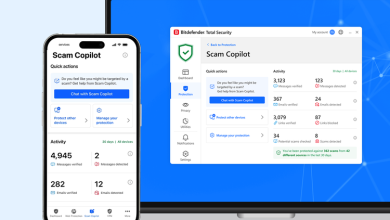Navigating the Onboarding Journey: Crafting an Effective 30-60-90 Day Plan for New Employees

The successful integration of new employees into your organization is a critical process that can set the tone for their entire journey. A well-structured 30-60-90 day onboarding plan provides the roadmap for both the new hires and the company to align their goals and expectations. In this blog, we will explore the importance of such a plan and provide insights into creating an effective 30-6-90- day plan for onboarding new employees, ensuring a seamless transition for your new team members.
Why a 30-60-90 Day Onboarding Plan Matters
A well-thought-out 30-60-90 day onboarding plan holds several advantages:
- Structured Learning: It provides a structured learning path, ensuring that new employees are introduced to essential information and responsibilities in a systematic manner.
- Expectation Alignment: It aligns the expectations of both the employee and the company, reducing potential misunderstandings and boosting overall job satisfaction.
- Faster Integration: New hires can quickly become productive contributors to the organization, reducing the time it takes to get up to speed in their roles.
- Increased Retention: Effective onboarding has been linked to higher employee retention rates, as new hires who feel welcomed and valued are more likely to stay with the company.
Creating an Effective 30-60-90 Day Onboarding Plan
Let’s break down the elements of an effective 30-60-90 day onboarding plan:
The First 30 Days: Building the Foundation
Week 1: Orientation and Warm Welcome
- Provide a comprehensive introduction to the organization, its mission, and its values.
- Assign a mentor or buddy to guide the new employee through their initial days.
- Ensure access to essential tools, resources, and IT systems.
Week 2-3: Role Familiarization
- Introduce the new employee to their team and clarify their role within the organization.
- Provide training on specific job responsibilities, including any software or processes they will use.
- Set clear performance expectations and key performance indicators (KPIs).
Week 4: Feedback and Goal Setting
- Arrange a one-on-one meeting between the new hire and their manager to discuss progress and address any questions or concerns.
- Collaboratively set performance goals for the first 90 days.
The Next 30 Days (60-Day Mark): Integration and Skill Development
Week 5-6: Skill Development
- Arrange specialized training sessions tailored to the new employee’s role.
- Encourage participation in company meetings and projects to foster a deeper sense of integration.
Week 7-8: Regular Feedback*
- Conduct a mid-point review to evaluate the new employee’s progress toward their goals.
- Adjust training and development plans based on feedback and performance.
Week 9-10: Expansion of Responsibilities*
- Begin delegating more responsibilities as the new hire becomes more comfortable with their role.
- Encourage participation in cross-functional projects to broaden their understanding of the organization.
The Final 30 Days (90-Day Mark): Independence and Full Integration
Week 11-12: Autonomy*
- Shift the focus from training to independent work.
- Assign projects that allow the new employee to apply what they’ve learned.
Week 13-14: Final Review*
- Conduct a comprehensive performance review, comparing the new employee’s progress against their 30-60-90 day goals.
- Discuss career development and future opportunities within the organization.
Week 15-18: Ongoing Development*
- Continue offering opportunities for growth and development.
- Encourage participation in company initiatives and leadership programs.
Measuring Success and Adapting
To ensure the effectiveness of your 30-60-90 day onboarding plan, consider implementing the following steps:
- Feedback Loops: Regularly seek feedback from new employees about their onboarding experience and make necessary adjustments based on their suggestions.
- Manager Involvement: Encourage managers to actively engage in the onboarding process, regularly checking in with new hires and providing guidance.
- Performance Tracking: Continuously monitor the performance and job satisfaction of new employees to assess the impact of your onboarding plan.
- Flexibility: Be flexible and willing to adjust the plan as necessary to accommodate the unique needs and learning pace of each new hire.
- Evaluation: Regularly assess the onboarding process as a whole and make improvements based on the collective experiences of new employees.
Conclusion
An effective 30-60-90 day onboarding plan is an invaluable tool for seamlessly integrating new employees into your organization. It sets clear expectations, fosters a sense of belonging, and accelerates their ability to contribute to the company’s success. By investing in structured onboarding, you not only empower new hires but also strengthen your organization’s overall performance and employee retention. Remember, the journey of onboarding is just the beginning of a long and productive partnership.



